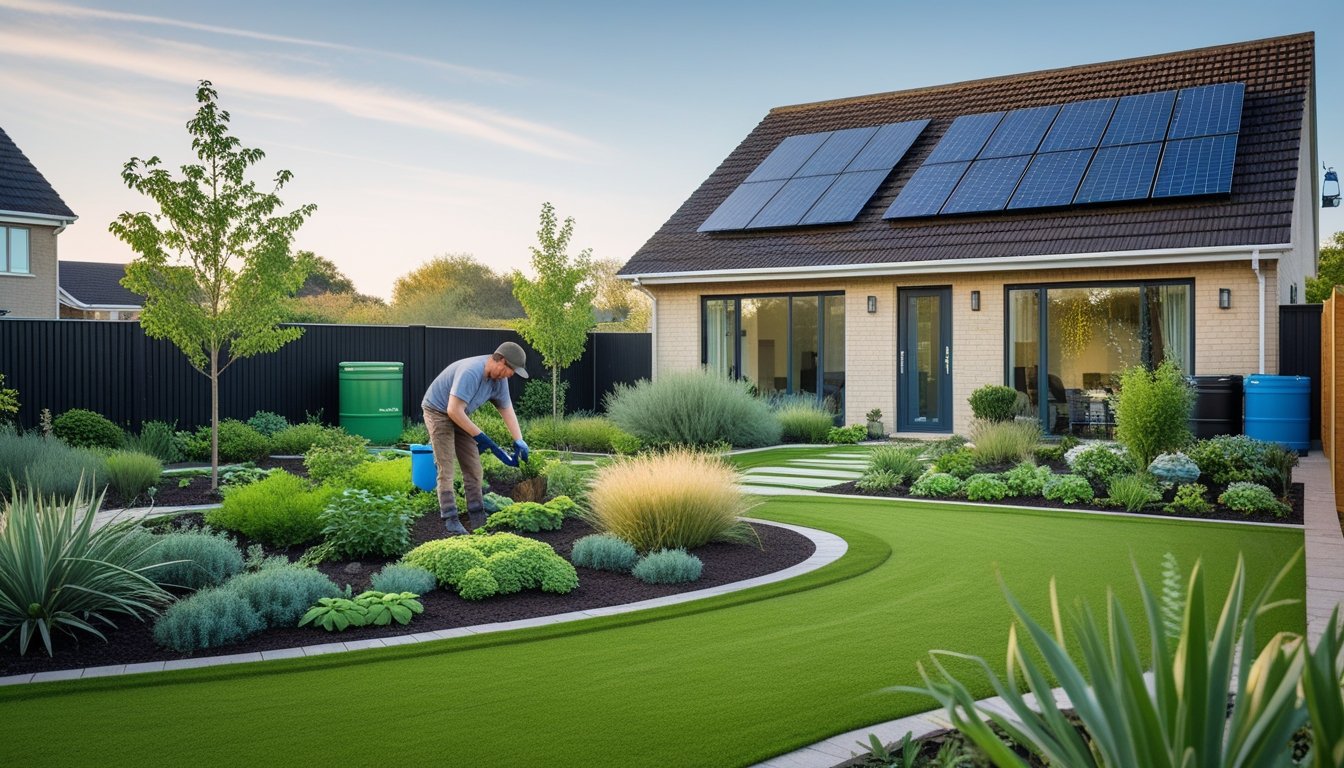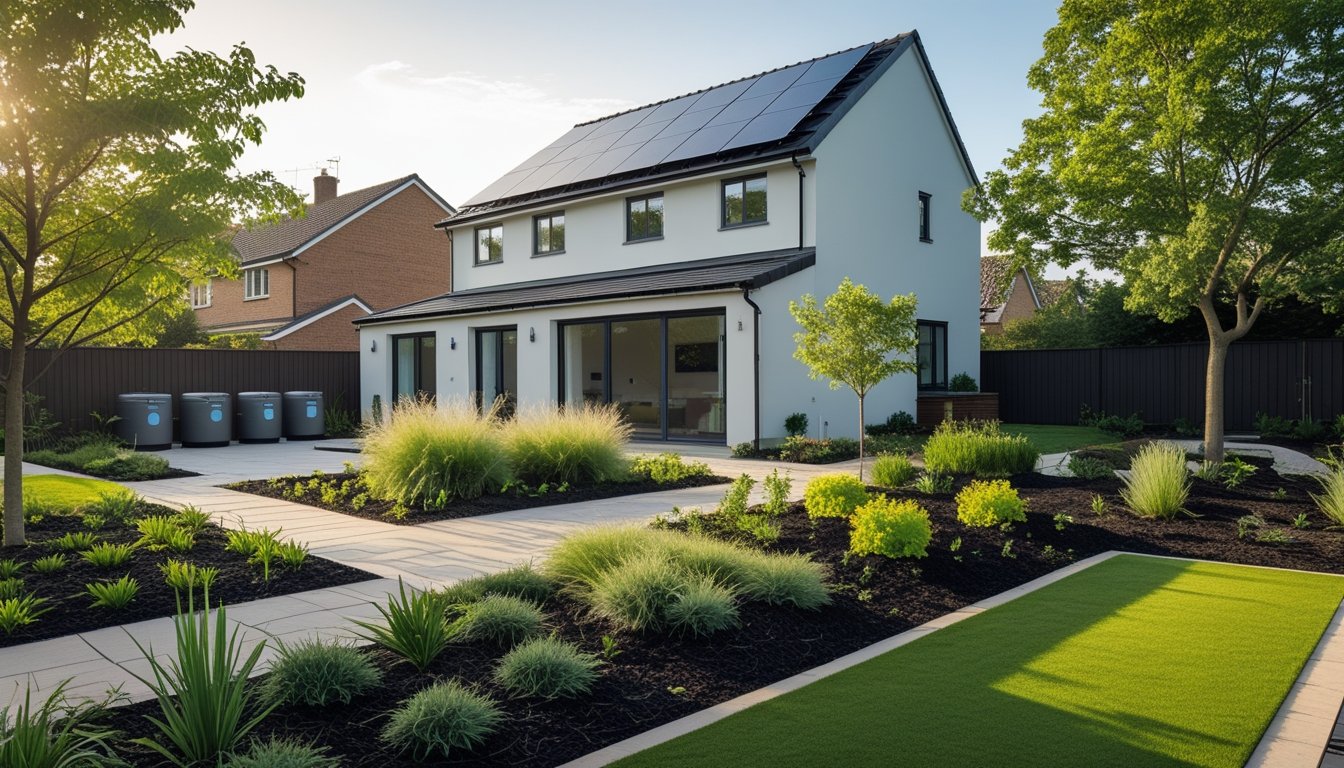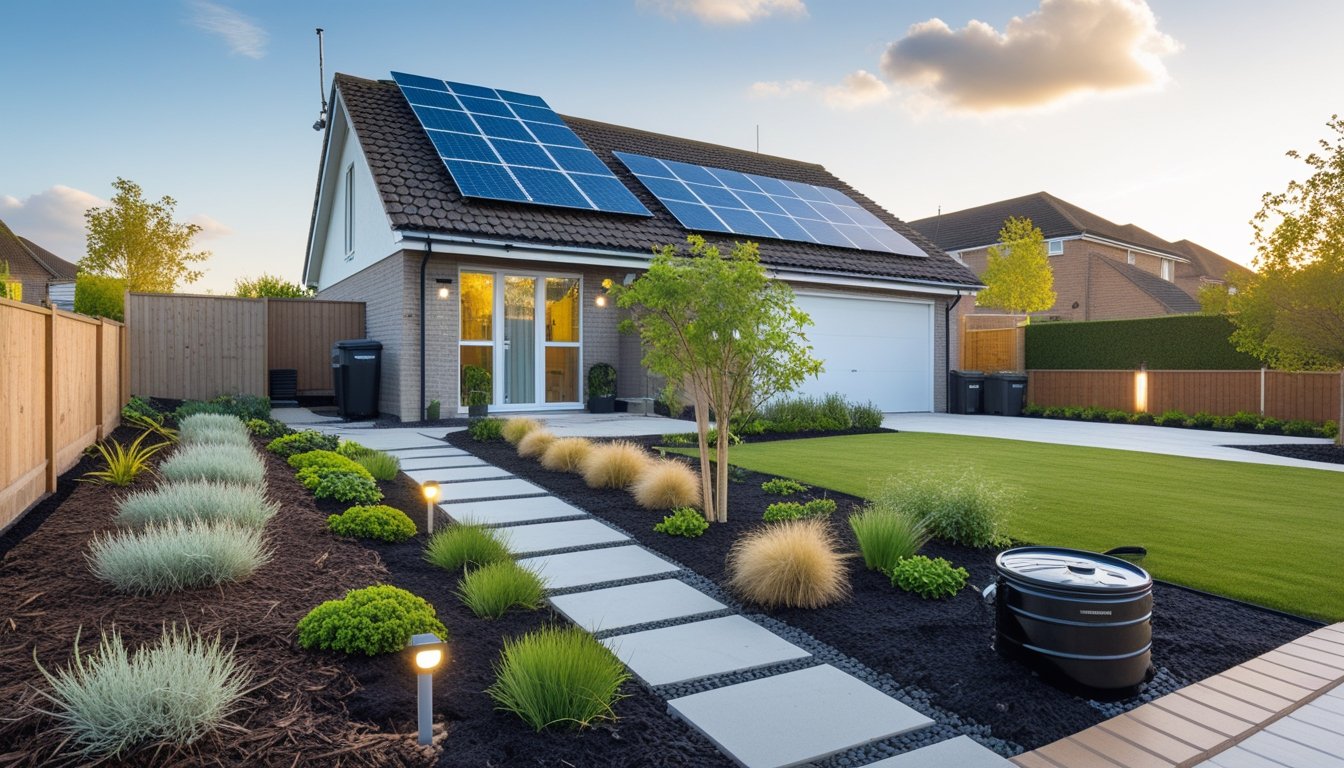Late updated: 06 Jun 2025 08:06
Written by: Eleanor Hartman
Exploring Energy-Efficient Landscaping Solutions for UK Homes: Enhancing Sustainability in Your Garden
Redefining our outdoor spaces through energy-efficient landscaping offers not just a step towards sustainability but also an opportunity to lower energy bills. By integrating nature with smart design, we can create gardens and landscapes that not only enhance the beauty of our homes but also contribute to energy saving. In the UK, strategic placement of trees and shrubs can reduce cooling costs by providing natural shade during the warmer months.

It's not just about planting greenery; it involves selecting the right plants, using materials wisely, and incorporating modern technology such as automated irrigation and solar lighting. These elements work together to form a cohesive landscape that aligns with our energy-saving goals. Designing with efficiency in mind, we can blend aesthetics and functionality in our outdoor spaces, making them both pleasing and practical.
The journey to sustainable living begins with understanding how each element of our landscape impacts energy use. As we explore these innovative practices, we'll not only be preserving resources but also setting a standard for environmental stewardship in our communities. By adopting these solutions, we pave the way for a greener future.
Key Takeaways
- Energy-efficient landscaping reduces cooling costs through strategic planting.
- Smart technology maximises energy savings in outdoor spaces.
- Understanding landscape design principles is essential for sustainability.
Principles of Energy-Efficient Landscaping
Energy-efficient landscaping integrates strategic design and sustainable practices to create outdoor spaces that minimise energy consumption. By understanding microclimates and selecting the right plants, we can develop a landscape that reduces the need for artificial heating and cooling, thus enhancing energy efficiency in and around UK homes.
Understanding Microclimate and Site Assessment
Microclimate management is key in developing energy-efficient landscapes. Each garden or outdoor space has its own unique microclimate, influenced by factors like sun exposure, wind patterns, and the presence of structures.
In the UK, a thorough site assessment helps identify these elements. By recognising areas prone to excessive sun or wind protection is required, we can employ design strategies that maximise natural light and natural insulators like shade trees or windbreaks. This site-specific approach ensures effective temperature regulation, which in turn reduces energy consumption.
Strategic Plant Selection for UK Climates
Choosing native plant species suited to local conditions is crucial for sustainable landscaping. Native plants and drought-tolerant plants require less water, promoting water conservation while minimising the need for energy-intense irrigation systems.
In the UK, incorporating deciduous trees and shrubs provides seasonal shade and allows natural light during colder months, supporting heating needs. Pollinator-friendly plants, such as those that attract bees, enhance biodiversity while contributing to an energy-efficient ecosystem. Implementing hedges and vines further aids in wind protection and enhances privacy.
Energy-Saving Planting Schemes
Developing energy-efficient planting schemes involves using plant species to regulate temperature and reduce energy reliance. Shade trees act as natural insulators, offering cooling effects in summer while evergreen trees provide year-round wind protection.
By positioning shade trees carefully around buildings and using ground covers and mulching, we enhance insulation and reduce soil temperature fluctuations. Such planting schemes not only lower energy bills but also contribute to a peaceful outdoor space that remains comfortable year-round.
Designing with Hardscaping and Sustainable Features
Incorporating hardscaping elements like permeable paving and trellises into landscape design furthers sustainability. Permeable paving allows water infiltration, reducing runoff and alleviating pressure on drainage systems.
Trellises support climbing plants that provide additional shade and cooling, while water features can improve humidity levels, enhancing comfort. Integrating green roofs into the home’s structure offers extra insulation and aids in managing temperatures, exemplifying energy-efficient design.
Our approach combines these elements to achieve a landscape that is both aesthetically pleasing and environmentally responsible, significantly impacting overall energy efficiency.
Smart Practices for Maximising Energy Savings

Exploring effective strategies for reducing energy consumption and increasing efficiency in our homes can significantly contribute to lower energy bills and a smaller carbon footprint. Through targeted approaches that encompass reducing resource consumption, eco-friendly maintenance, comfort enhancements, and smart integrations, we can better manage energy use in residential landscapes.
Reducing Energy and Water Consumption
In our pursuit of energy efficiency, landscaping plays a crucial role. By incorporating practices such as xeriscaping, we can minimise water consumption. This technique involves using drought-resistant plants that thrive with minimal watering and also reduce dependence on irrigation systems. Drip irrigation is another method where water is directly delivered to the roots, significantly cutting down on waste.
Implementing rainwater harvesting systems using rain barrels helps collect and repurpose natural precipitation for garden watering needs. These measures not only conserve water but also contribute to reducing energy consumption as less water is processed through energy-intensive municipal systems. Adopting these strategies effectively decreases both water bills and associated electricity bills.
Eco-Friendly Maintenance and Longevity
Ensuring our landscapes are easy to maintain and have a long lifespan is essential for energy efficiency. By opting for native plants, which are naturally adapted to local conditions, we reduce the need for excessive maintenance, watering, and fertiliser use. This choice helps prevent the escalation of energy bills related to upkeep.
Composting and recycling yard waste bolster soil fertility while reducing the need for synthetic fertilisers that require energy to produce and transport. This approach not only prolongs the vitality of our gardens but also lessens our overall energy consumption. Efficient maintenance solutions extend the longevity of outdoor spaces and diminish the need for frequent replanting or repairs.
Enhancing Comfort and Reducing Cooling Needs
Strategically placed trees and shrubs provide natural shade and play an instrumental role in regulating temperatures within and around our homes. By reducing direct sunlight exposure, vegetation helps lower cooling needs and therefore the demand on air conditioning systems, effectively cutting cooling costs.
Properly planned vegetation can also aid in creating natural ventilation paths that cool outdoor areas, reducing reliance on mechanical cooling systems. By incorporating plants with high transpiration rates, we can further enhance the cooling effect, contributing to the reduction of our carbon footprint and energy bills during warmer months.
Integrating Renewable and Smart Landscaping Solutions
Integrating smart technologies and renewable energy solutions into our landscapes can significantly enhance energy efficiency. Solar-powered garden lights and building integrated photovoltaic (BIPV) systems help convert sunlight into energy, facilitating savings on electricity bills.
Automated garden systems that manage watering schedules based on weather patterns ensure optimal resource use while preventing wastage. Smart landscaping efforts, which may include internet-connected sensors for moisture level monitoring, allow us to make informed decisions about irrigation, thus promoting eco-friendly outdoor spaces without sacrificing aesthetics or functionality. These innovations empower us to maintain energy-efficient landscapes effectively and sustainably.
Frequently Asked Questions

We explore how strategic landscaping can lead to energy savings, enhance sustainability, and improve the overall efficiency of UK homes. Our focus is on practical methods and their real-world applications.
How can one improve home energy efficiency through landscaping?
Improving energy efficiency through landscaping involves creating shade with trees, using windbreaks, and incorporating water-efficient practices. These measures reduce energy consumption for heating, cooling, and water usage, contributing to lower utility bills.
What are the benefits of resource-efficient landscaping for UK homes?
Resource-efficient landscaping reduces environmental impact and enhances home comfort. It leads to lower energy costs, an increased home value due to enhanced aesthetics, and contributes to biodiversity by providing habitat for local wildlife.
Which landscaping techniques are most effective for conserving energy?
Planting shade trees strategically, using shrubs as windbreaks, and installing reflective pond surfaces can significantly conserve energy. Shade trees reduce cooling costs in summer, while windbreaks lower heating needs in winter by reducing wind chill.
What is the most energy-efficient orientation for siting a house?
The ideal orientation is to have the longest side facing south. This maximises natural light and warmth from the sun, reducing heating and lighting costs. It's crucial to consider this when planning both house placement and landscape design.
How does the design of modern energy-efficient homes integrate landscaping?
Modern designs incorporate landscaping as part of the energy plan. They use native and drought-resistant plants, green roofs, and permeable paving to manage water usage and improve insulation, creating a seamless connection between home and garden.
In what ways can planting around the house contribute to energy savings?
Planting trees on the south and west sides offers shade and cooling in summer. Evergreens on the north provide a windbreak in winter. Ground cover plants around the home also help maintain soil moisture, reducing the need for irrigation.